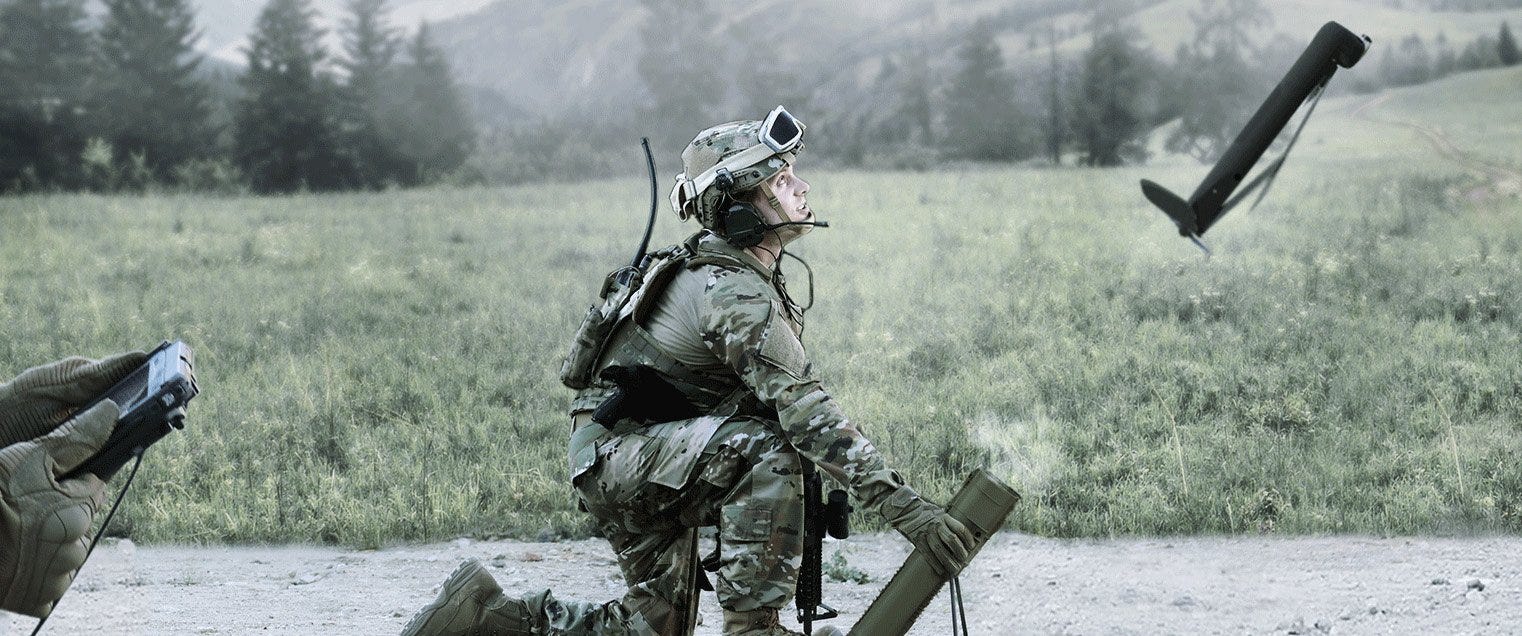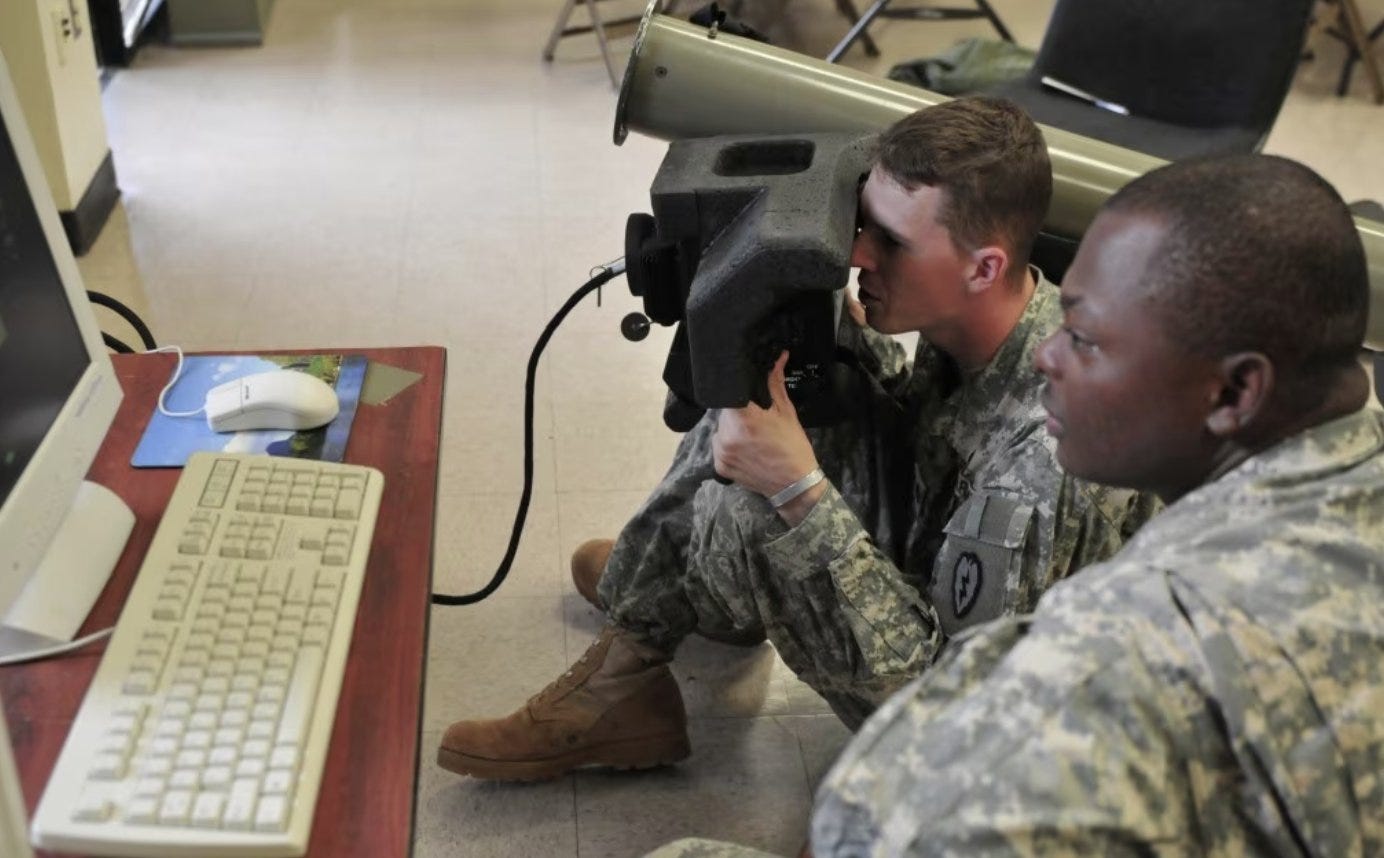The "game changer" signifier - as applied to weapons systems sent to Ukraine as military aid - has been used so liberally by the Western media that it has penetrated the popular understanding of the conflict and entered meme status. The cycle typically goes like this:
A relatively untested (in a peer war, anyway) Western weapon system is portrayed as so powerful, so superior, that its introduction into the war in the hands of the Ukrainian side has the potential to disrupt the balance of power in the conflict or even win the war.
The pro-Ukrainian space online, and sometimes even in actual flesh and blood meatspace, cries out for the West to deliver the weapon system to Ukraine. Any delay or resistance to doing so is considered tantamount to collaboration with the Russians.
The system is, at last, delivered to the Ukrainians.
It does not change the game.
The system is mostly forgotten about, disappearing from the headlines.
The cycle then begins again with a new system. This process is so formulaic and regimented that it feels like the entire thing is coordinated. And it likely is, to some extent. Western media, governments, and military contractors never feel as much like one homogenous blob as they do here. In some cases, the hype for the latest Wunderwaffe in the pages of respected media institutions feels like a paid advertisement by Raytheon, Rheinmetall, or any of the other dozens of entities that have gotten in on the game.
In this series, I will be evaluating the game changers of the Ukraine War in something approximating their order of appearance in the field. The point is not so much to analyze technical specifications and performance but to contrast the media hype with the strategic result of their introduction. To qualify as a "game changer," the system must have been portrayed that way in the media or by major influencers online. I'll assign a "Game Changer" rating to each system, with 1 being no change to the game whatsoever and 10 being roughly equivalent to introducing the Colt revolver to the Texas frontier in the war against the Comanche (it completely changed the game). Let's begin.
AeroVironment Switchblade 300/600

First referred to as a game changer on: March 17, 2022
Appearance in Ukraine: May 2022
Country of origin: US
Unit Cost: $58,000 (300 model)
Number sent: 700 (300 model), 100 (600 model)
Manufacturer market cap: $6.11B
The Hype
"My understanding of this new drone is that it’s not a traditional drone – what some call a ‘loitering weapon,’" said Pete Phillips, a retired Marine helicopter pilot. "It gives you the ability to launch it in a 300 series or 600 series, and the 600 series has a loiter time of about 40 minutes, so you’re looking at the ability to launch this remotely-piloted weapon and have it sit above a battle space."
"You have the ability to wave off," Phillips said. "You can target a vehicle, but say a civilian or non-combatant enters the scene, the user can dismiss the target command. That’s a game-changer," he stressed. "It has the potential to limit collateral damage on the battlefield, but the other great thing is to give the Ukrainian people stand-off capabilities."
Reality
While FPV drones would become perhaps the most important true game changer of the Ukraine War, the Switchblade series was the worst implementation of the technology by either side. Critical issues included the minuscule payload size of the 300 model (equivalent to a 40mm grenade), bulky launch system, and jaw-dropping price tag. All-in costs for a single unit (including launcher) exceeded $58,000 when they were first sent to Ukraine, not including the $30,000 external guidance unit. (note: some articles claim a Switchblade 300 costs $6,000 or that the $58k price tag only referred to packs of 10 drones; this is not correct).
Compare this to the now ubiquitous improvised drone setup favored by both sides throughout the conflict:
Commercial off-the-shelf quadcopter drone: ~$800. Doesn't require a compressed air canister or launcher.
RPG warhead from old Soviet stocks: basically free. Has 10x-20x the explosive payload of a 300 model.
The difference is stark. A system costing 1/60th the price packs ten times the punch, is incomparably easier to acquire, easier to use (VTOL!), and more portable.
The promised videos of the 300 model in action appeared, but they were mostly snoozefests compared to FPV drone footage, which would spring up like a fountain later in the war. The 300's tiny explosive was simply too small to have much of an effect, and the US sent far too few systems due to their high price tag and glacial pace of manufacture. The Ukrainians weren't fans, vocally preferring commercial drone kits.
As the war progressed, increasingly well-developed Russian electronic warfare capabilities rendered the Switchblade obsolete. By 2023, the Ukrainians said they were losing 10,000 drones a month to Russian EW, ten times the number of 300 models sent in the first place.
The 600 model was designed for attacking armor and weighs double that of the Russian Lancet. Few 600 models were sent, as they were in the prototype stage when the war began. The conflict failed to be the marketing success that AeroVironment was hoping for, and the US Army decided to terminate its contract for the Switchblade 300.
While FPV drones came to dominate the battlefield in Ukraine, the Switchblade series had no measurable impact, and it was soon forgotten.
Game Changer Rating: 1/10
Raytheon/Lockheed Martin FGM-148 Javelin (AAWS-M)
First referred to as a game changer on: March 24, 2022
Appearance in Ukraine: 2018
Country of origin: US
Unit Cost: ~$220,000
Number sent: >7000
Manufacturer market cap: $169B (RTX), $136B (LMT)
The Hype
The hype cycle around the Javelin anti-tank system has become legendary. Not content to simply label it a game changer, the Western commentariat would refer to it as really a game changer, or a true game changer.
Javelin antitank missiles Ukraine are wreaking havoc on the Russian invaders. The lightweight but lethal weapon has helped the underdog Ukrainians inflict major damage on Moscow’s much-vaunted military and stymie their advance.1
The character of Saint Javelin depicts a Madonna holding the Raytheon launcher instead of the traditional Christ Child. The image spread like wildfire and soon appeared on stickers, patches, and even tattoos.
There are reports that Ukrainian forces have achieved a more than 90 percent kill rate when employing these missiles in the conflict.2
Ukraine already had several hundred Javelins in its stocks from an initial order in 2018. Their attempt to procure more Javelins sparked a strange controversy featuring then-President Trump, which ended up leading to his first impeachment.
“The Javelins are the most sophisticated and most effective weapon the Ukrainians have."
In the early days of the war, Javelin was heavily featured in the propaganda legend about the Russian withdrawal from the Kiev direction. Some commentators went as far as to attribute the withdrawal to the Javelin itself having "stopped the Russians in their tracks." Staggering reports like 90% kill rates and Russian armor formations decimated by Javelin-wielding AFU troops were shared widely.
The Reality
The reality, however, was much different. Increasing numbers of unused Javelins were found abandoned in areas where the Russians gained ground. The Ukrainians reportedly massively favored the Swedish NLAW, which was faster to deploy and generally easier to use. Batches of Javelins and NLAWs had been rushed to Ukraine in the first weeks of the conflict, and it was often difficult to distinguish them on video.
One thing the NLAW had going for it was that the UK had sent relatively new systems. The Javelin stocks the Americans had sent were a completely different story. The US had sent the oldest units in their stocks, and reports of misfires and malfunctions abounded. In a trench warfare environment, poking up your head in a firefight to launch a $250,000 missile that does nothing but sizzle is a harrowing experience, and word traveled fast through the AFU.
The missiles also suffered accuracy issues, sometimes hitting non critical parts of their targets, like the barrels of tanks. And while videos of Javelins being launched were everywhere, videos of actual kills were rare, considering the huge number of systems in Ukrainian hands.
Reports began to trickle into the Western media that the Javelin was "finicky." Units sometimes failed to power on entirely, and the Ukrainians were left to sort through the issues themselves. The system requires argon coolant and well-maintained battery packs, which had to be handled properly. The batteries lasted only four hours, assuming no missiles were fired, so they had to be closely monitored to ensure they were kept at full charge. Not uncommonly for modern American hardware, the system is complex and far from user friendly. The 258-page instruction manual had to be run through Google Translate for the Ukrainians, which made training difficult.
Hayward recalled how in March, as he taught a class on the Javelin, he received a call from a soldier in southeast Ukraine who was hiding behind a small hill — taking cover from Russian tank fire. The soldier’s launch unit was malfunctioning. Hayward couldn’t diagnose the issue over the phone, he said, and the soldier was forced to flee. He does not know the man’s fate.3
The customer support card (seriously) that was supposed to come standard with every kit and came with toll-free numbers to call to help with troubleshooting was often missing from the units delivered to the front. US volunteers had the impression they had been removed intentionally. The story was the same with the training software, which was typically included, though it's not clear how much use it would have been to the average Ukrainian soldier, who speaks little English.
If they were lucky, the Ukrainians received a less than two-day training course on the system, while the official course US Army personnel took lasted 80 hours.
In August 2022, Russian media published what they claimed were classified Raytheon documents on the Javelin's performance in the GWOT. According to the documents, the malfunctions reported by the Ukrainians had also been experienced by American soldiers in testing. They also indicated that the system's hit rate was less than 40%, though the conditions under which these hits occurred were not specified.
Another issue with the Javelin had to do with supply. By April of 2022, the US had already sent the oldest third of its entire supply, while only 1,000 were being manufactured a year. The turnaround time for a new order was a jaw-dropping 32 months. If the US stopped sending missiles entirely at that point, it would take a full four years to replenish what they had already lost. Considering the Ukrainians were tearing through 500 missiles a day in the first phase of the war, it wouldn't be long before the Javelin essentially disappeared from the battlefield.
But the Javelin was destined to fade away regardless due to FPV drones and the conflict's transition to trench warfare. Drones have almost too many advantages over shoulder-fired AT weapons to count: they can be launched safely from behind cover, are more precise, can loiter over the battlefield, provide reconnaissance while you're using them, and hugely, they are an infinitesimal fraction of the cost. The Ukrainians didn't need to wait for the American military industrial complex to get its shit together and deliver another tiny tranche of Javelins to strike Russian armor, they already had a solution. The system is still used in Ukraine, and scattered videos of its missiles hitting tanks appear from time to time, but the conversation has moved on.
The Javelin hype cycle, for its outrageous discrepancy between hope and reality, should have been the most absurd in the conflict. But as we'll see, it was far from it. It escapes a rating of 1 for its successful kills, but the Javelin clearly failed to change the game. The cheaper, lighter, easier-to-use NLAW would receive a better score but was the beneficiary of only a fraction of the hype. While shoulder-fired systems may have played a part in the conflict's transition to slow, grinding attrition warfare, the drone deserves most of the credit.
Game Changer Rating: 2/10
Corky Siemaszko. (2022, March 22). U.S.-made Javelin missiles are “vital” to Ukraine’s fight against Russia, experts say. NBC News. https://www.nbcnews.com/news/world/us-made-javelin-missiles-are-vital-ukraines-fight-russia-experts-say-rcna20878
https://www.facebook.com/eric.sof. (2022, March 24). FGM-148 Javelin: A game changer in armored warfare. Spec Ops Magazine. https://special-ops.org/fgm-148-javelin-a-game-changer-in-armored-warfare/
Horton, A. (2022, June 14). For Ukrainian troops, a need arises: Javelin customer service. Washington Post; The Washington Post. https://www.washingtonpost.com/national-security/2022/06/14/ukraine-javelin-assistance/


















Generally a good article over all, but you were far too generous towards the impact the Javelin had and towards its effectiveness at all. The main problem with the Javelin was that Ukraine already had ATGMs of its own in far larger numbers than the Javelin and which were far better than the Javelin in every way, such as the Soviet 9M113 Konkurs and 9K111 Fagot (Russian word for "Bassoon") and Ukraine's own Stugna-P, with the last of the three being the best performing ATGM in Ukrainian service by far. Not to mention all the shorter-ranged, dumb-fire rockets like RPG-7s that Ukraine had in spades for closer-ranged engagements that didn't require the launching soldier to expose himself long enough to get a lock. Thus, all of the faults of the Javelin become utterly indefensible considering that Ukraine already had stockpiles of better ATGMs and especially considering all the people who got killed because of the Javelin's faults:
Wali, a fellow Van Doo and sniper with combat experience in Afghanistan, was manoeuvring [sic] around to get a clean shot at one of the Russian iron monsters with an American-made Javelin anti-armour [sic] missile.
The tank had been tantalizingly out of reach before it turned on them and struck.
Wali, who was interviewed by CBC News in early March, wasn't prepared to give up even after the Ukrainian soldiers were killed. Shadow said that as Wali was looking for the best firing position, he knew they were outmatched.
"And I was like, bro, we need to get the hell out of here ... there's nothing we can do. We need to get out of here," he said.
They slipped away with the tank firing after them.
"So yeah, that was my last patrol on the eastern front," he said. "I have one word to describe [it], and it's just hell."
From: https://www.cbc.ca/news/world/ukraine-russia-canadian-forces-1.6443048
How this encounter happened is that the Javelin is actually limited to a range of 2.5km (the US Army claims that later versions have a range of up to 5km, but no evidence has ever surfaced to substantiate this claim), which is not only within range of any .50 caliber machine gun made since the interwar period of about ~3km which all tanks since the late '30s have had as a secondary or tertiary armament, but is also well within the effective detection range of even the oldest and crappiest of gen 1 thermal sights used by some older late-Soviet and early-Post Soviet tanks like the T-80UK. Thus, one has to get well within the effective range of a tank to get a lock on which only has an ~27.27% chance of hitting at all as recorded during late-stage training exercises in 2021 (Source: Infantry Brigade Combat Team Scout Platoon Anti-Armor Engagements at the Joint Readiness Training Center by CPT Christopher R. Brown (a publicly available document)) mostly due to guidance failures (unfortunately, I can't post the source I have for that as my source is leaked footage of Israeli Spike ATGMs suffering guidance failures with their very similar heat seeker that I can't post here, but DM me if you want them), let alone the usually less than spectacular effects of the Javelin usually just hitting the cannon barrel, tracks or exhaust port, with the last of the three being why Javelins were particularly ineffective against T-80s.
So, really, the fact that the Javelin managed to destroy a dozen or so tanks, IFVs, and APCs is not enough to save it from being a 1/10, especially since it got Ukrainian soldiers killed in engagements where other similar systems Ukraine already had wouldn't. While its true that the 9K111 ATGM is also limited to a range of 2.5km and is wire guided which comes with a whole slew of its own issues especially when mounted to a vehicle, its status as a tripod-mounted ATGM makes it far easier to conceal, so it can be easily fired from a building, trench, or bunker, where a tank is less likely to see it. Additionally, a 9K111 can be fired from effectively point-blank range at 70m, basically making it a guided RPG, while the Javelin has a minimum range of 500m due to the arc the missile flies on in both its top-attack and direct-fire modes, which precludes it from being viable in city fights where other short-ranged AT systems like RPGs and 9K111s dominate. Also, a 9K111 can be aimed at specific weakspots, thus making it far more lethal. And Konkurs and Stugna-P are even better with the former having a range of 4km and the latter having a range of 5-5.5km while being laser guided.
You miss the point - the endless supply of western wunderwaffen keep the war going, they keep Ukraine in the fight and the western public thinking that this time, this next escalation is the one that will do it.
The wonderwweapons do exactly what they were intended to do.